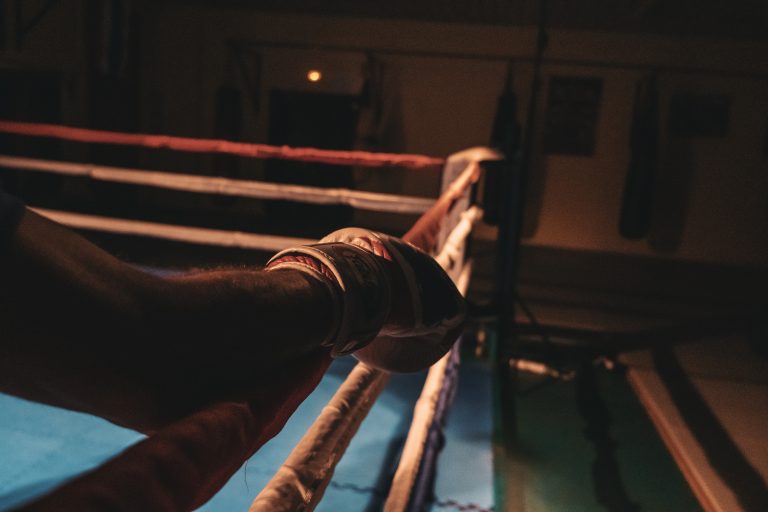How to Train Karate at Home: A Comprehensive Guide
Karate is a martial art that originated in Japan and has gained popularity all over the world. It is a form of self-defense, but it also has many physical and mental benefits. With the recent COVID-19 pandemic, karate practitioners have been forced to train at home due to the temporary closure of martial arts schools. In this guide, we will discuss how to train karate at home and get the most out of your training sessions.
1. Choose a Training Space
The first step to training karate at home is to choose a suitable training space. Ideally, this should be a spacious and uncluttered room with enough space for you to move around. Remove any obstacles that might get in the way, such as furniture or fragile items. Make sure that you have enough light and ventilation in the room.
2. Warm-Up
Before you start your training session, it is essential to warm up properly. This will help you avoid injuries and improve your flexibility. A good warm-up should include stretching exercises for all the major muscle groups. Start with some light cardio exercises such as jogging, jumping jacks, or skipping.
3. Practice Basic Techniques
Karate consists of basic techniques that form the foundation of the art. These include punches, kicks, blocks, and strikes. Practice these techniques in slow motion to ensure that your form and technique are correct. Focus on maintaining a stable stance, keeping your body aligned, and moving smoothly.
4. Develop Speed and Power
Once you have mastered the basic techniques, you can begin to focus on developing speed and power. This involves performing the techniques rapidly and powerfully. Start by practicing with a light bag or a target pad, gradually increasing the intensity as you improve. Use your hips and core to generate power in your strikes.
5. Practice Kata
Kata is a form of karate training that involves performing a prearranged series of moves. Kata is an essential part of karate training as it helps to develop muscle memory, coordination, and timing. Choose a kata that is suitable for your level and practice it regularly.
6. Incorporate Strength Training
Strength training is an essential component of karate training, as it helps to improve explosive power and overall fitness. Some effective strength training exercises for karate include push-ups, squats, lunges, and core exercises. Focus on functional movements that mimic the movements used in karate.
7. Join Online Classes
Many karate schools are now offering online classes, which are an excellent way to supplement your home training. These classes are led by experienced instructors and provide a structured and supervised training environment. Online classes also offer the opportunity to interact with other karate students from around the world.
8. Don’t Forget to Rest
Rest is an essential part of any training program, as it allows your body to recover and regenerate. Avoid overtraining, which can lead to injuries and burnout. Aim to train for 30-60 minutes per day, several times a week, and take at least one rest day per week. Make sure to get enough sleep and eat a healthy and balanced diet.
Most Frequently Asked Questions about Training Karate at Home
Karate is an ancient martial art that originated in Japan and has since become popular worldwide. It is known for its powerful strikes, kicks, and blocks, and is a great way to improve strength, flexibility, balance, and overall fitness. Since many people are unable to attend karate classes due to time constraints, scheduling conflicts, or other reasons, they wonder if they can train karate at home. In this post, we’ll answer some of the most frequently asked questions about how to train karate at home.
1. Can I really learn karate at home?
Absolutely, you can learn karate at home! However, it’s important to remember that karate is a complex martial art that requires a lot of practice, patience, dedication, and discipline. Learning karate at home requires self-motivation, self-discipline, and a willingness to learn and practice on your own. Additionally, you won’t have an instructor there to correct your technique or provide feedback, so it’s important to pay attention to your own form and be mindful of any mistakes.
2. What are the benefits of training karate at home?
Training karate at home has several benefits. Firstly, it allows you to practice whenever you have time, without the need to travel to a gym or dojo. Secondly, it can save you money on gym memberships or class fees. Thirdly, it allows you to customize your training to your own fitness level, goals, and interests. Fourthly, it can be a great way to improve your mental focus, discipline, and confidence.
3. What equipment do I need to train karate at home?
To train karate at home, you don’t need a lot of equipment. Some basic items you may wish to have include a practice mat, a punching bag, or some hand weights for strength training. You may also wish to invest in some karate clothing or gear, such as a gi, belt, gloves, or shin guards. However, these items are not strictly necessary, especially when you’re just getting started.
4. How should I structure my training at home?
When training karate at home, it’s important to have a structured routine that includes warm-up exercises, technique drills, and cool-down stretches. You may want to begin with some basic stretches to warm up your body, followed by some cardiovascular exercises such as jumping jacks or running in place. Then, you can practice various techniques, strikes, and blocks, paying attention to your form and technique. Finally, you should end your training session with some cool-down stretches to help your muscles relax and prevent injury.
5. How can I improve my technique without an instructor?
Improving your technique when training karate at home can be challenging, since you won’t have an instructor to guide you. However, there are some things you can do to help improve your technique. Firstly, you can watch instructional videos or read books about karate techniques, paying attention to the details of each move. Secondly, you can practice in front of a mirror to observe and correct your form. Thirdly, you can ask a friend or family member to watch you and provide feedback. Finally, you can record yourself and watch the video to see where you need to improve.
6. How can I stay motivated to train karate at home?
Staying motivated to train karate at home can be difficult, since you won’t have the external motivation of an instructor or class to keep you going. However, there are some things you can do to stay motivated. Firstly, set goals for yourself and track your progress. Secondly, find a training partner or group online to share your progress with and get feedback from. Thirdly, switch up your routine and try new techniques to keep things interesting. Finally, remind yourself of why you started training karate in the first place and how it has improved your physical and mental health.
In conclusion, training karate at home is definitely possible, but it requires dedication, self-motivation, and a structured routine. By answering these frequently asked questions, we hope to have provided you with some valuable guidance and insight into how to train karate at home. Good luck!
How to Train Karate at Home
If you have an interest in martial arts, specifically karate, but are unable to attend a physical dojo, don’t worry. You can still train karate at home with some dedication and effort. Follow these step-by-step instructions to start your karate training journey:
Step 1: Learn The Basics of Karate
Before you start your home-based karate training, it’s essential to learn and understand the fundamental principles of karate. Begin by researching the basics of karate, such as its history, forms or katas, punches, and kicks. Watch some tutorial videos or read books on karate to gain an overall understanding of the sport.
Step 2: Create a Home-Based Karate Practice Area
To train karate at home, you need to set up a designated area, preferably private and spacious. Choose a part of your house or garden with sufficient space and without any obstructions. You can use a home gym or even clear out the garage. Make sure your practice area has proper lighting and ventilation, keeping it clean and tidy at all times.
Step 3: Invest in Basic Karate Equipment
While karate doesn’t require complex equipment, incorporating some basic pieces of equipment will enhance your karate training experience. Consider purchasing a karate uniform, known as a Gi, along with hand wraps, gloves, and a punching bag. If not a punching bag, then you can also use a pillow or a punching board.
Step 4: Warm-up and Stretching
Warming-up and stretching before starting any workout or exercise is essential. Martial arts can be physically demanding, which is why warming up and stretching are crucial. Begin your karate training with gentle exercises like skipping or jumping, followed by a few stretching exercises to loosen up your muscles fully. Stretching exercises should target areas such as arms, legs, waist, and back.
Step 5: Start with Basic Karate Moves
Once you finish your warm-up, it’s time to start your karate training session. Begin by practicing the basic karate moves, such as front punch, roundhouse kick, and front kick. You can watch tutorial videos or read books to get a better understanding of these moves, but it’s always best to learn from a skilled instructor.
Step 6: Practice Katas and Forms
In karate, kata is a series of movements that help to memorize different techniques and develop your reflexes, speed, and strength. Start by learning some of the basic kata sequences and then move onto intermediate and advanced katas. Practicing katas can improve your overall technique and simulation of a karate fight.
Step 7: Repeat and Improve
The most crucial aspect of karate training is consistency. Set a regular schedule for training and stick to it. Keep practicing, repeating, and improving your karate moves, katas while striving for perfection. Be patient, dedicated, and persistent, and eventually, you’ll start seeing significant improvements in your karate skills.
Conclusion
Training karate at home is possible, but it requires dedication and consistent practice. Start your home-based karate training by preparing your practice area and investing in basic equipment like a karate uniform, hand wraps, gloves, and a punching bag. Focus on learning the basics of karate, warm-up and stretching, basic karate moves, katas, and forms, and keep practicing consistently. With the right mindset, commitment, and guidance, karate training can be an engaging and rewarding experience.
Inhaltsverzeichnis






